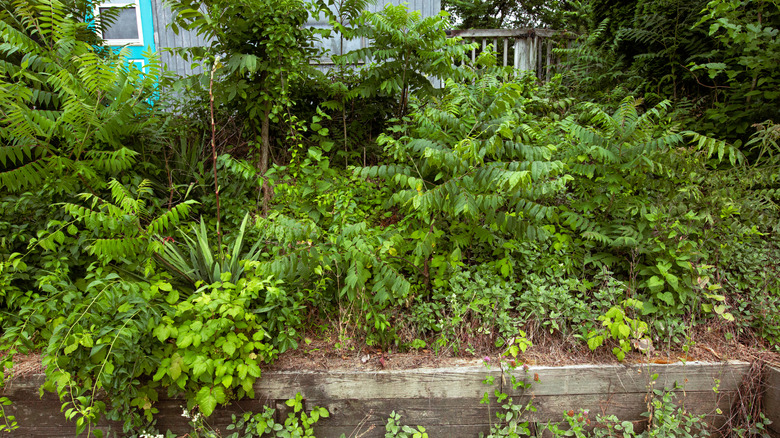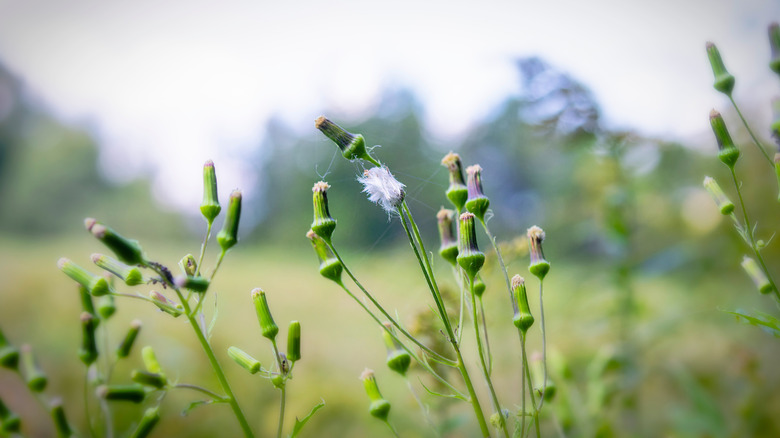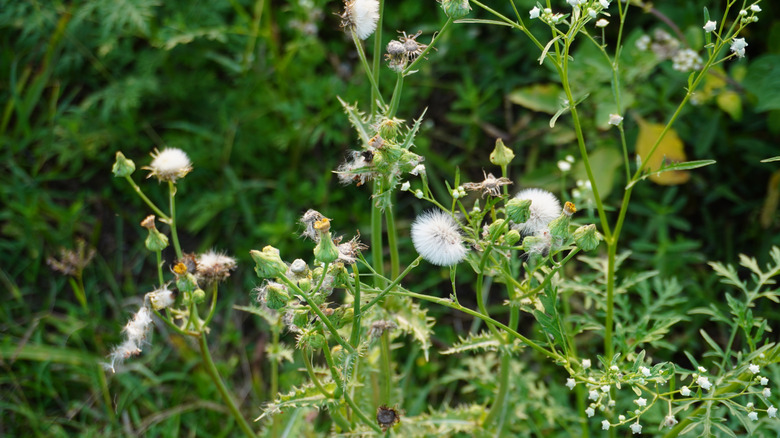The Fast-Growing Fall Weed You Might Actually Want In Your Yard
While it's rare to find a weed that may actually be beneficial for your yard, there's one in particular that might boast more pros than cons. If you've never heard of American burnweed (Erechtites hieraciifolius), this annual herbaceous plant may be a welcome addition to your yard, if it's not living there already. While it can be considered invasive in some parts of the world where it's not native, including Europe and Australia, American burnweed is typically self-restricting and does not require excessive control in its native habitats.
If you already have American burnweed in your yard, you might not want to rush to remove it. From its environmental benefits to its medicinal properties, this weed can boost your garden's ecosystem, bring in important pollinators, and reduce atmospheric nitrogen dioxide. Considered a "pioneer species," American burnweed can grow in various tough environments, including rocky soil and areas with recent wildfires.
How to identify American burnweed
If you're unsure whether or not you have American burnweed in your garden, there are a few notable characteristics to look out for. This plant is typically found in "disturbed" environments like ditches and railways, as well as coasts, shores, fields, and wetlands in North America, primarily in the Midwest, East Coast, and the South. To confirm that this plant isn't considered invasive where you live, make sure to check invasive plants in your region. Sprouting in the summer, these plants grow upright in branches with multiple-stem clumps and can reach up to 10 feet tall.
You can spot American burnweed by its bulb-shaped, cylindrical flowers, usually with a green base and often a purple-ish bulb. These typically appear in the late summertime. After a burnweed is pollinated, its flowers usually have white, hair-like seedheads, similar in appearance to dandelions, which are blown away by the wind. American burnweed's wide, lengthy green leaves are serrated, and when crushed, its flowers typically have a strong, unpleasant smell.
Pros and cons of American burnweed
Whether you wish to add American burnweed to your garden or you already have a population, this plant can be a helpful, healthy boost to your yard. Historically, this plant was used by Native Americans for numerous medicinal purposes, treating skin conditions like eczema and digestive issues like diarrhea. It can even be eaten raw or cooked.
American burnweed's most favorable characteristics are its appeal to helpful pollinators and its ability to reduce pollution. The plant can actually assimilate nitrogen dioxide into an organic form, and potentially reduce the atmospheric pollution from this greenhouse gas. As for pollination, this plant is primarily alluring to beneficial insects like bees and butterflies, thanks to its sweet nectar. Besides reeling in pollinators and converting gases, this plant can also help control erosion along bodies of water.
However, while not all non-native plants are considered invasive, American burnweed is considered highly invasive for many parts of the world, including the western United States. In non-native areas, the weed is hard to control, and has even built up resistance to certain herbicides. American burnweed can also cause problems for farmers, specifically those growing berries, oats, or barley. This weed serves a very beneficial purpose, especially when found along the sides of roads or by bodies of water. But to reap the benefits in your own yard, make sure you live where American burnweed is considered native.


